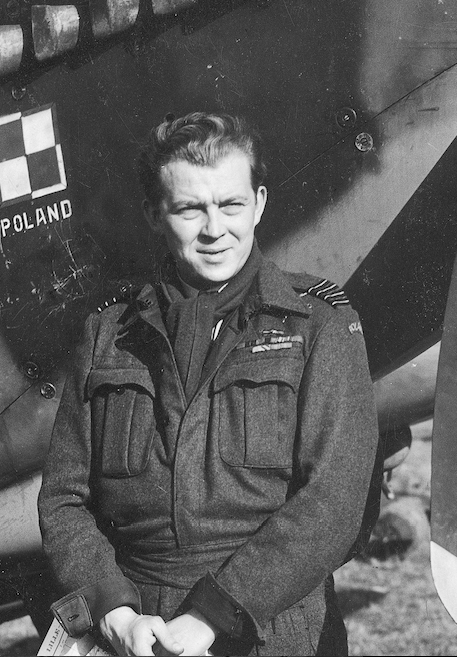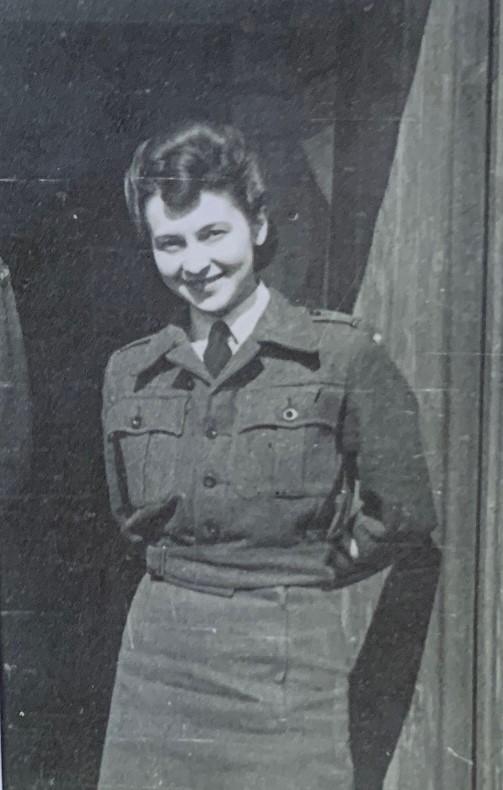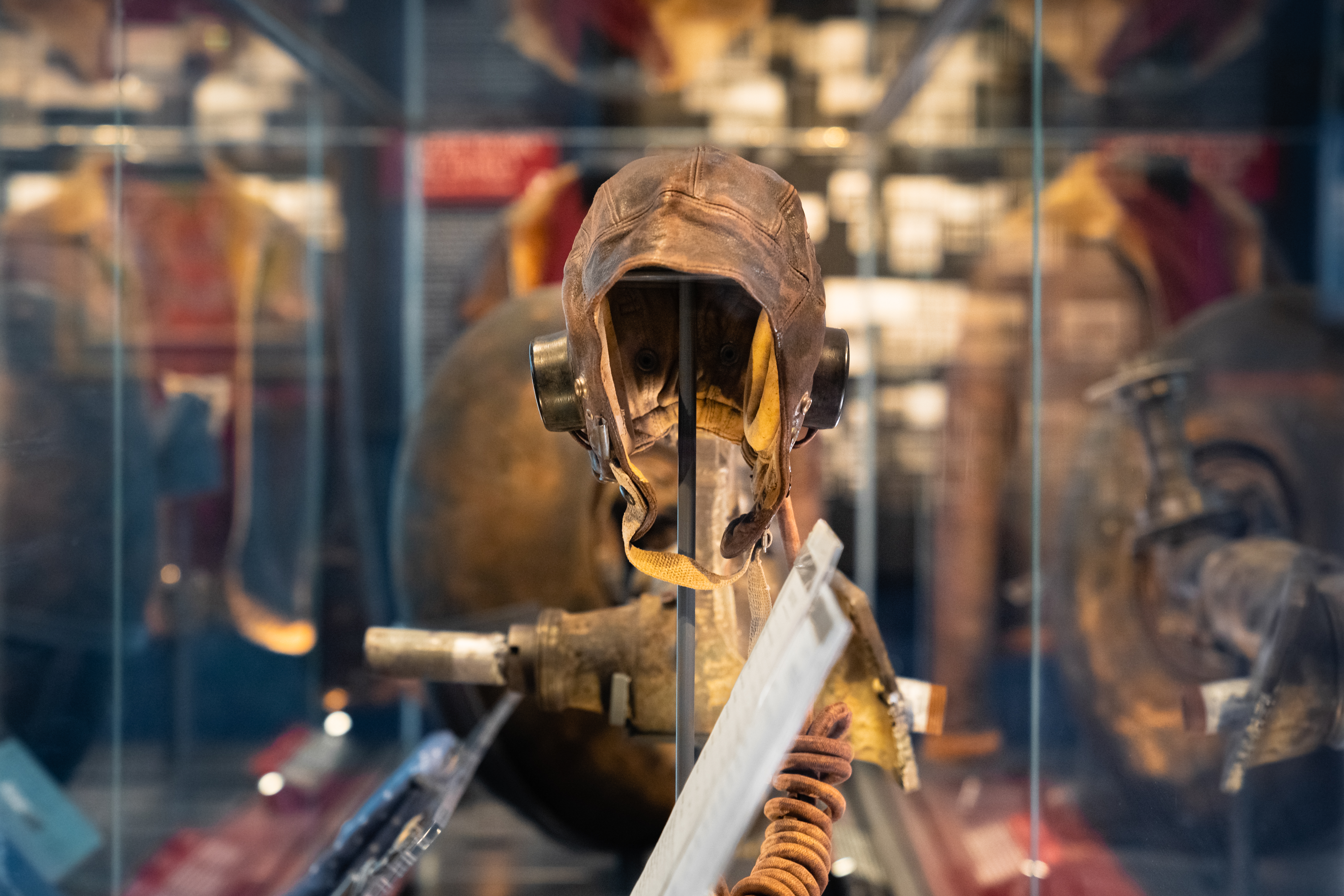THE POLISH AIR FORCE
“Had it not been for the magnificent material contributed by the Polish Squadrons and their unsurpassed gallantry, I hesitate to say that the outcome of battle would have been the same”.
AIR CHIEF MARSHAL SIR HUGH DOWDING
Commander-in-Chief of Fighter Command, 1936-1940
To commemorate the 80th anniversary of the Battle of Britain (1940-2020) Hillingdon Council worked closely with the Polish Air Force Memorial Committee to create a brand-new permanent display that highlights the vital role of the Polish Air Force during the Second World War.
THE EXHIBITION
The exhibition highlights the perilous journeys undertaken by Polish Air Force personnel following the invasion of Poland by Germany and the Soviet Union in 1939. It explores the military preparations in pre-war Poland and how the Polish Government in Exile and military were organised in France and Britain during 1940. A variety of objects and documents provide information on combat missions during the Second World War and highlight the different roles in the Polish Air Force including pilots, observers, ground crew and the Polish Women’s Auxiliary Air Force.
Many of the items in the exhibition are being shown to the public for the first time, alongside fascinating personal stories and historic film.
The Polish Air Force has a significant historical connection to Hillingdon. During the War, Polish fighter squadrons participated in air campaigns organised by Headquarters No. 11 Group (RAF Fighter Command) based at RAF Uxbridge. Squadrons were coordinated from the Battle of Britain Bunker, which was the Operations Room for No. 11 Group responsible for organising fighter aircraft based at airfields in the south-east of Britain.
Polish squadrons were stationed at RAF Northolt throughout the War and a Polish Liaison Officer was appointed at the Bunker to liaise directly with Polish Air Force High Command. In addition, South Ruislip (near RAF Northolt) is the location of the Polish Air Force Memorial erected to commemorate all who served with the Polish Air Force during the Second World War.
The exhibition was formally opened by His Excellency Professor Arkady Rzegocki, Ambassador of the Republic of Poland to the Court of St James’s and Councillor Sir Ray Puddifoot MBE, Hillingdon Armed Forces Champion. Ambassador Rzegocki said:
“Last year we marked 80 years since the Battle of Britain, which turned the tide of World War II. I am glad that on this occasion the Hillingdon Borough decided to honour the memory of those without whom the war could have ended differently and has prepared a special Polish Air Force Exhibition at the Battle of Britain Bunker, presenting bravery and personal stories of those ‘Few’. It is a great opportunity to reflect on the Polish-British spirit of camaraderie that binds us thanks to those who in the past have shed blood for Poland, the United Kingdom and Europe.”
We look forward to welcoming visitors to view the exhibition.
PROFILES
A total of 18 thousand men and women served in the Polish Air Force in Britain during the Second World War. It was a complete, compact and efficient air force organisation with 15 operational squadrons, which represented all principal service roles. Polish Air Force personnel were supported by a comprehensive training system including basic ground training, Polish elementary and service flying training schools, operational training, and a staff college. Below are six short profiles of Polish Air Force personnel and associated collections included in the exhibition.
General Władysław Sikorski
Prime Minister of the Polish Government in Exile and Commander-in-Chief of the Polish Armed Forces
Following the occupation of Poland in September 1939, a Polish Government in Exile was formed in France, while substantial numbers of Polish military personnel were evacuated to France and Britain. Whilst in France during 1940, Sikorski made the air arm of the Polish Army an independent service of the Polish Armed Forces. This became the Polskie Siły Powietrzne (PSP), known in Britain as the Polish Air Force. He continued to lead the Polish Armed Forces until his death in July 1943.
Collections: Officer’s uniform jacket, photographs

Group Captain Aleksander Gabszewicz
Pilot
In 1940 Gabszewicz served with No. 303 (Kościuszko) Squadron and in 1941 he joined the newly formed No. 316 (Warszawa) Squadron and was ‘A’ Flight Commander before taking command of the whole Squadron. In 1942 he was appointed the Polish Liaison Officer at the Bunker (HQ No. 11 Group). Later in the war, Gabszewicz was Wing Leader of the 1st Polish Wing at RAF Northolt and in 1943 he obtained an exchange posting to the 61st Fighter Squadron, 56th Fighter Group, United States Army Air Force (USAAF), flying combat sorties in P-47 Thunderbolts. In 1944 Gabszewicz took command of No. 18 (Polish) Sector between February and July, when he was in command of three wings, which included five Polish and four RAF/Allied squadrons. This was a fighter force bigger than the entire Polish fighter aviation in 1939.
Collections: Field service cap, flying jacket, scarf

Wing Commander Wieńczysław Barański
Pilot
In October 1940 Barański participated in the Battle of Britain, serving with No. 607 Squadron (RAF) based at RAF Tangmere. In November he transferred to No. 303 (Kościuszko) Squadron and, between February and June 1941, he was ‘A’ Flight Commander with No. 316 (Warszawa) Squadron. Between 1941 and 1942 Barański was reposted as a Ground Control Officer with 316 Squadron and No. 308 (Kraków) Squadron. In October 1943 he took command of No. 302 (Poznań) Squadron and in 1944 he enrolled at the Polish Air Force Staff College and subsequently became a lecturer in fighter tactics.
Collections: Identification card, miniature medals, silk scarf, cigarette case

Leading Aircraftman Tadeusz Kwissa
Ground Crew
Kwissa served with No. 303 (Kościuszko) Squadron from 1940 to 1943. On 4 July 1941 he was awarded the much valued ‘Kościuszko Badge’ – the 303 Squadron Commemorative Badge. On 21 September 1943 he was reposted with all No. 303 Squadron ground crew to 3105 Servicing Echelon at RAF Northolt. In 1944 Kwissa served with No. 308 (Kraków) Squadron (6308 Servicing Echelon) and, as part of No. 131 (Polish) Wing, serviced aircraft at advanced landing grounds in England and France.
Collections: wartime diaries, miniature medals, photographs

Warrant Officer Kazimierz Gutowski
Ground Crew
Gutowski was head of the maintenance section for No. 307 (Lwów) Squadron during the Second World War. In August 1944 Gutowski was decorated with the British Empire Medal by Air Vice-Marshal Malcolm Henderson, Air Officer Commanding No. 12 Group (RAF Fighter Command), for his excellent work and commitment to duty.
Collections: artwork (painting)

Section Officer Alicja Kaliniecka (née Cybulska)
Polish Women’s Auxiliary Air Force (WAAF) – Pomocnicza Lotnicza Służba Kobiet Kaliniecka served at RAF Faldingworth in Lincolnshire, where she worked as an Intelligence Officer with No. 300 (Ziemia Mazowiecka) Bomber Squadron. In April 1945 she took part in Operation Manna – an airborne humanitarian mission – which delivered over 7,000 tons of food parcels in ten days over the Netherlands, where one million people were suffering from starvation. Collections: brass button lighter, Certificate of Enrolment (1943), photographs

PRODUCTION TEAM
Hillingdon Council would like to thank the following companies responsible for the design and installation of the Polish Air Force exhibition.


